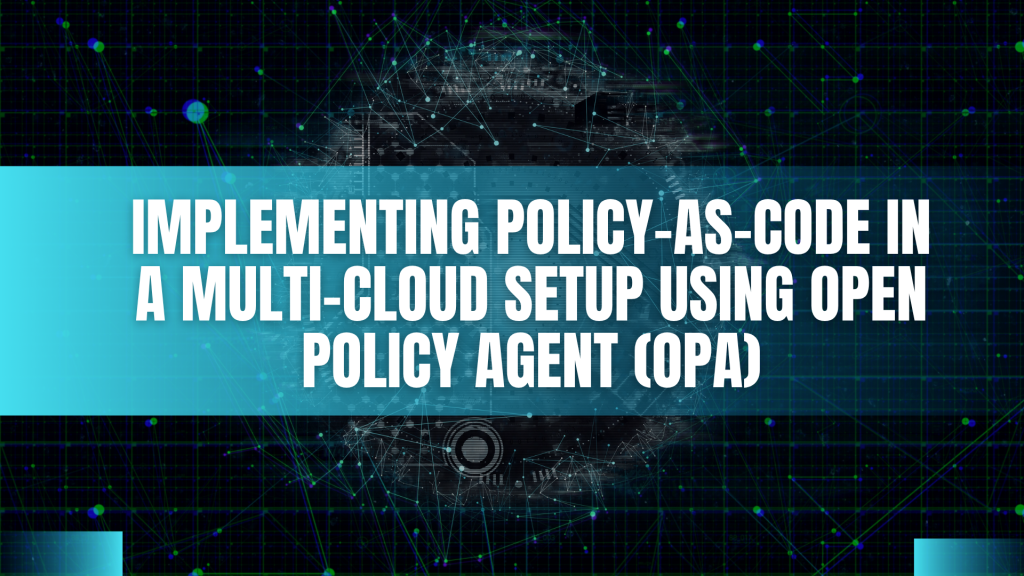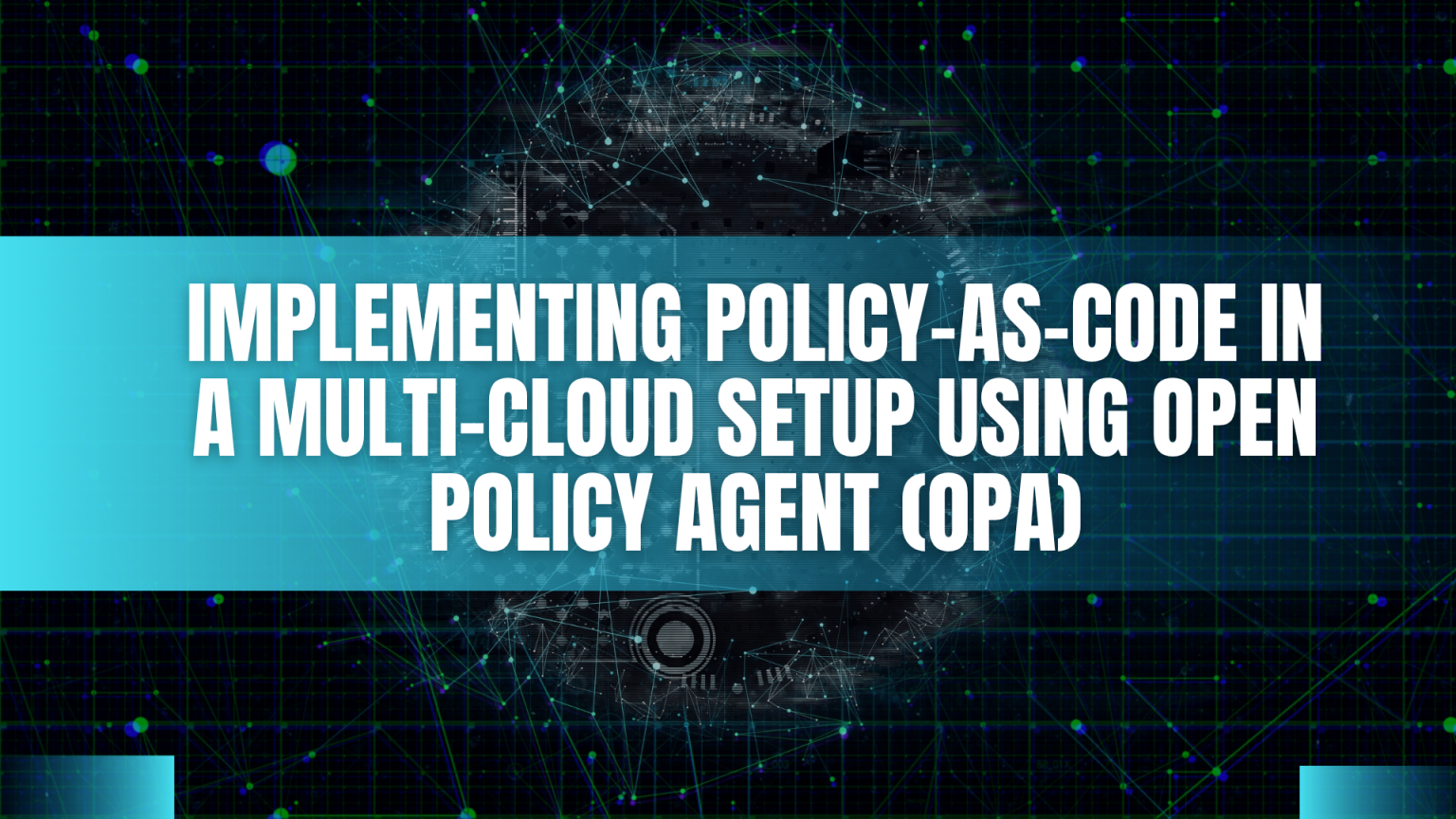
In the modern cloud era, enterprises increasingly operate in multi-cloud environments, leveraging services from AWS, Azure, and Google Cloud Platform (GCP) simultaneously. While this approach offers flexibility, cost optimization, and redundancy, it introduces significant complexity in terms of governance, compliance, and security management. One major challenge is ensuring consistent policy enforcement across different cloud providers. That’s where Policy-as-Code (PaC) and tools like Open Policy Agent (OPA) come into play.
Understanding Policy-as-Code in Multi-Cloud Contexts –
Policy-as-Code is the practice of writing policies and governance rules as machine-readable code. It allows organizations to automate decision-making processes for infrastructure provisioning, access control, security posture, and compliance enforcement. In a multi-cloud environment, Policy-as-Code provides a unified framework to define, enforce, and manage these policies consistently across cloud providers. This approach eliminates the manual overhead of writing platform-specific rules for each provider, ensuring scalability and auditability.
Why Choose Open Policy Agent (OPA)?
Open Policy Agent (OPA) is a general-purpose, open-source policy engine that enables developers and DevOps teams to separate policy logic from application logic. Its powerful declarative language, Rego, allows you to express complex policies in a clear and testable format. One of OPA’s most compelling strengths is its flexibility—it can be integrated into CI/CD pipelines, Kubernetes clusters, Terraform workflows, and API gateways, making it ideal for multi-cloud setups. Whether you’re validating infrastructure changes in AWS, enforcing security policies in Azure, or setting access controls in GCP, OPA can serve as a single, unified enforcement layer.
Implementing OPA in a Multi-Cloud Setup –
To implement Policy-as-Code using OPA across multiple cloud providers, organizations should follow a few foundational steps. First, policies must be written using Rego and stored in a version-controlled Git repository, adhering to GitOps principles. This ensures traceability, collaboration, and secure distribution of policy logic.
Next, the policies are integrated into various stages of the cloud lifecycle. For example, OPA can be used with Terraform to validate infrastructure-as-code templates before deployment, ensuring that only compliant configurations are applied. Tools like Conftest allow you to test Terraform plans against Rego policies, making this integration seamless.
For containerized workloads, OPA Gatekeeper can be deployed on Kubernetes clusters across all cloud providers. Gatekeeper enforces policies on Kubernetes resources by rejecting deployments that don’t meet predefined rules—such as enforcing specific labels, image registries, or namespace usage. This ensures consistency and security across your Kubernetes workloads, whether they’re hosted on AWS EKS, Azure AKS, or GCP GKE.
Additionally, OPA can be embedded as a sidecar container, run as a standalone service, or used via REST APIs to make policy decisions at runtime. This architecture supports real-time validation of API requests and access control decisions across cloud-native applications.
Example Use Case: Enforcing Tagging Policies –
A common challenge in multi-cloud environments is maintaining proper resource tagging for cost tracking, ownership, and environment classification. Using OPA, you can write a simple Rego policy that enforces required tags such as Environment, Owner, and CostCenter.
For instance, the policy can be integrated into a Terraform pipeline to check whether a compute instance in AWS or GCP includes the required metadata. If the tags are missing, the policy can block the deployment or flag it for review. This ensures that all resources—regardless of cloud provider—adhere to organizational standards before they go live.
Centralized Policy Management and Auditing –
In a distributed cloud environment, managing policies across multiple clouds may seem daunting. However, with OPA, it is possible to centralize policy definitions while distributing policy enforcement. You can maintain a shared Git repository that contains all Rego policies and distribute them to OPA agents deployed in different cloud environments.
Additionally, integrating OPA with centralized logging systems such as ELK Stack, CloudWatch, Azure Monitor, or Google Cloud Logging allows you to track policy decisions, monitor violations, and generate audit reports. This enhances visibility and helps meet compliance standards such as GDPR, HIPAA, or SOC 2.
Best Practices for Multi-Cloud OPA Implementation –
When implementing Policy-as-Code using OPA in a multi-cloud setup, consider these best practices:
- Standardize policies across clouds to reduce duplication and inconsistency.
- Modularize Rego code for reusability and clarity.
- Start in audit mode to evaluate policy impact before enforcing decisions.
- Automate testing and deployment of policies using CI/CD pipelines.
- Integrate with native cloud tools where appropriate for layered governance.
By following these practices, you can implement scalable and reliable policy enforcement mechanisms tailored to your enterprise architecture.
Conclusion –
As multi-cloud adoption becomes the norm, ensuring governance and compliance across diverse environments is more critical than ever. Implementing Policy-as-Code with Open Policy Agent (OPA) enables organizations to automate and scale their policy enforcement while maintaining consistency and transparency. Whether you’re securing infrastructure deployments, enforcing tagging standards, or managing Kubernetes workloads, OPA provides a powerful, flexible, and cloud-agnostic solution. By integrating OPA into your multi-cloud strategy, you future-proof your governance framework and align your operations with modern DevSecOps best practices.


